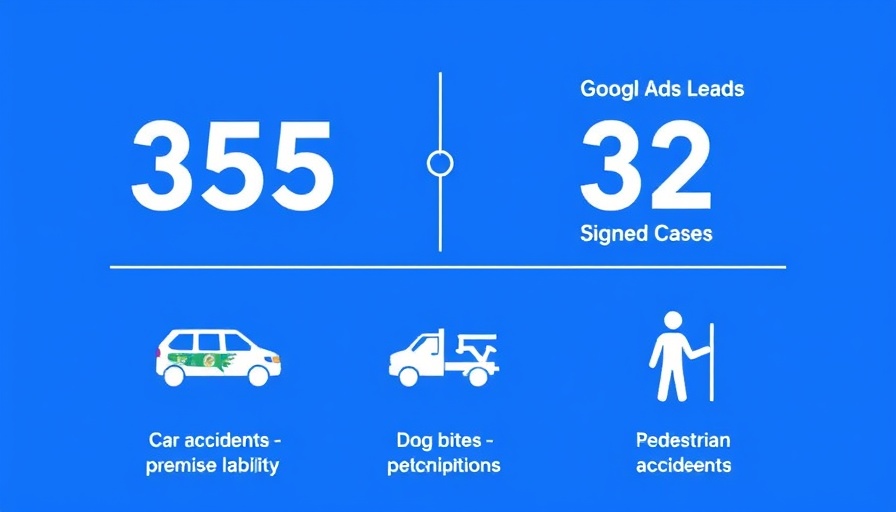
How Google Ads Brought 355 MVA Leads Last Month
Did you know that Google Ads can be a game-changer for businesses? In just one month, 355 leads were generated through Google Ads for the MVA (Motor Vehicle Accident) niche. This impressive number highlights how effective digital marketing, especially PPC (pay-per-click) advertising, can drive relevant traffic to a website and convert visitors into potential clients.
The Power of Pay-Per-Click Advertising
PPC advertising, particularly through Google Ads, allows businesses to only pay when potential customers click on their ads. This means every dollar spent is working towards generating leads. What does this mean for you as a business owner or marketer? With the right strategy, you can maximize your ROI (return on investment) and see tangible results in a short period. For those unfamiliar with advertising jargon, just remember: it's about spending wisely to gain new customers!
Understanding Analytics and Data Reporting
To truly benefit from PPC advertising, tracking and understanding analytics is essential. Metrics such as click-through rates (CTR), conversion rates, and cost-per-click (CPC) provide insights that can significantly improve the effectiveness of digital marketing campaigns. Google Analytics can be your best friend in this regard. It allows you to see where your clicks are coming from and which ads are performing best. By delving into this data, marketers can adjust their strategies for even better performance.
Maximizing Leads: Strategies to Implement
If you're looking to boost leads similar to the 355 achieved last month, there are several strategies to consider:
- Keyword Research Techniques: Identify the right keywords that are relevant to your audience’s search behavior. A keen understanding of what your potential clients are searching for can drive traffic to your website.
- Landing Page Optimization: Ensure your landing pages are tailored to convert visitors into leads. A clean layout, relevant content, and easy navigation can dramatically improve your conversion rates.
- A/B Testing Strategies: Test different ad copies and landing page designs to see what resonates most with your audience. Small changes can lead to significant increases in performance.
Future Predictions in PPC Advertising
As digital marketing continually evolves, it’s critical to stay updated on the latest trends. In 2025, we expect to see a rise in programmatic advertising, which automates the buying process and optimizes ad placements. Additionally, AI in digital marketing will become more pronounced, helping brands deliver personalized ads based on user behaviors and preferences. Staying ahead of these trends can set your business apart and leverage opportunities as the marketing landscape changes.
Takeaway: Embrace Digital Marketing Strategies Now!
The takeaway here is clear. If you want your business to grow, you need to embrace digital marketing and PPC advertising seriously. With platforms like Google Ads, your business can tap into a vast audience, optimizing strategies based on real-time data and analytics. Don't wait—start exploring PPC opportunities today. You could be the next success story with hundreds of leads in just a month!
Want to learn more about digital marketing and how it can transform your business? Dive into resources about SEO updates and content marketing strategies to enhance your understanding and make informed decisions.
 Add Row
Add Row  Add
Add 




Write A Comment